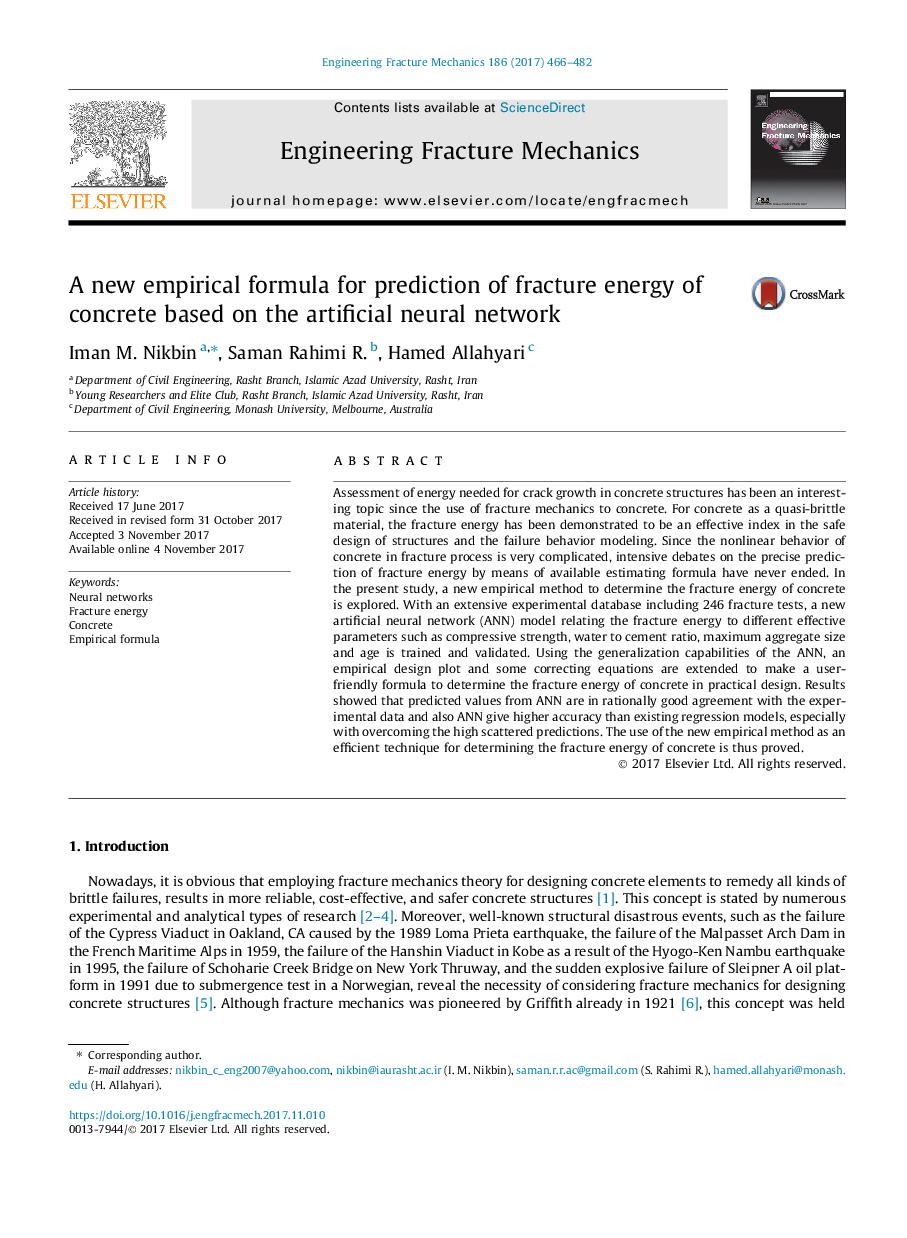| Article ID | Journal | Published Year | Pages | File Type |
|---|---|---|---|---|
| 7169352 | Engineering Fracture Mechanics | 2017 | 17 Pages |
Abstract
Assessment of energy needed for crack growth in concrete structures has been an interesting topic since the use of fracture mechanics to concrete. For concrete as a quasi-brittle material, the fracture energy has been demonstrated to be an effective index in the safe design of structures and the failure behavior modeling. Since the nonlinear behavior of concrete in fracture process is very complicated, intensive debates on the precise prediction of fracture energy by means of available estimating formula have never ended. In the present study, a new empirical method to determine the fracture energy of concrete is explored. With an extensive experimental database including 246 fracture tests, a new artificial neural network (ANN) model relating the fracture energy to different effective parameters such as compressive strength, water to cement ratio, maximum aggregate size and age is trained and validated. Using the generalization capabilities of the ANN, an empirical design plot and some correcting equations are extended to make a user-friendly formula to determine the fracture energy of concrete in practical design. Results showed that predicted values from ANN are in rationally good agreement with the experimental data and also ANN give higher accuracy than existing regression models, especially with overcoming the high scattered predictions. The use of the new empirical method as an efficient technique for determining the fracture energy of concrete is thus proved.
Related Topics
Physical Sciences and Engineering
Engineering
Mechanical Engineering
Authors
Iman M. Nikbin, Saman Rahimi R., Hamed Allahyari,
